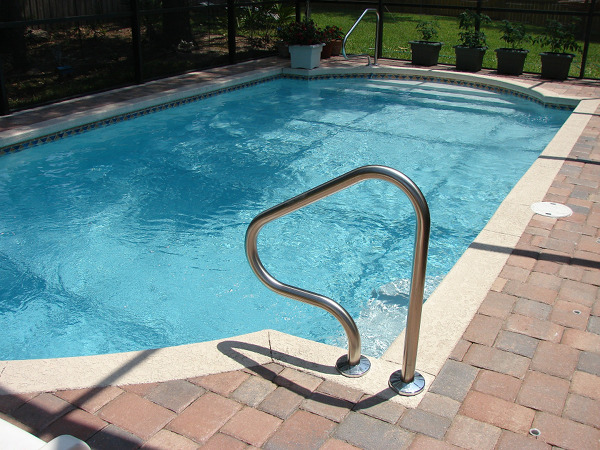
Reviewed by Andrada Simion, Master of Science in Chemistry
What chlorine level is too high to swim in?
- According the the CDC, your pool only needs a minimum free chlorine concentration of 1 ppm (this minimum rises to to 2 ppm if you use stabilizer). At the upper end industry experts recommend below 4.
- You shouldn’t rely on your sense of smell to gauge levels as the typical “pool odor” is not from chlorine itself but from byproducts when it reacts with organic substances like urine and microorganisms (chloramine compounds). Instead you should use testing kits, but there are different types with important differences between them – OTO testing kits don’t detect combined chloramines so it’s advisable to used DPD ones which do so and can give you both combined and free Cl numbers (there are also both strip types and drop types). Sometimes if numbers are so high that the testing kit can’t even read them you may need to add pure water to the sample and multiply the reading by the initial sample amount then divide it by the final sample amount.
- Safety issues of swimming in a pool with too-high levels (depending on just how high) can range from mild and temporary eye, skin, throat and lung problems all the way to life-threatening respiratory and digestive symptoms and more.
- High levels can make the water too acidic, possibly leading to erosion and/or discoloration of anything in or touching the pool water (including swimwear or other garments).
Causes
- Too much stabilizer, or adding too much chlorine whether by accidental spillage or by overestimating how much you need (whether during shocking or routine chlorinator usage – required amounts are dynamic and change depending on things like filter condition, amount of stabilizer used, weather/season and bather load).
Reduction
- You can purchase special-purpose products specifically designed to remove chlorine from pools with varying efficacy and secondary effects (such as lowering pH), with one of the most popular and inexpensive ones being sodium thiosulfate – just be sure to add it slowly while stirring (a fifth of an ounce is enough for a 1ppm reduction per 1000 gallons) while simultaneously taking measurements (you may also need to raise the pH afterwards) – using more than the amount needed to reduce chlorine to nothing is wasteful and means you would have to use more than necessary for replenishment.
- If you don’t mind balancing other chemicals afterwards (or they’re also high to begin with) and water is cheap, draining and filling (a fraction of the total volume at a time) can work.
- For levels of around 4-9 ppm which is high but still safe to swim in, a big reduction isn’t necessary so simply getting a lot of people to swim in it can deplete enough of it to lower it to recommended amounts.
- For outdoor pools that also don’t use stabilizer, the ultraviolet radiation from a couple of hours of sunlight can bring levels down to a tenth of what they were initially (also possible with UV pool lamps, especially stronger ones like ‘medium pressure’ types designed to kill microorganisms, but at a slower rate if you only use one of them) so take any pool covers off – environmental debris that gets in the water will further contribute to the job.
- A third of an ounce of pure vitamin C (ascorbic acid) can be used for a 1ppm reduction per 1000 gallons.
- Depending on what type you use, temporarily block, remove, empty or power off your chlorinator (or don’t put in any more yourself if you add it by hand).
- For pools with heaters, turn it on to encourage microbial growth as any organic matter can help deplete free chlorine.
- As long as the water isn’t too acidic you can use H202 (hydrogen peroxide) – it will cause fizzing when added (but use food-grade which is at least 30% concentration rather than medical grade which is around a tenth of that).
- Baking soda won’t directly contribute to lowered levels, but it can help speed up natural outgassing by lowering pH (which still won’t be quick).